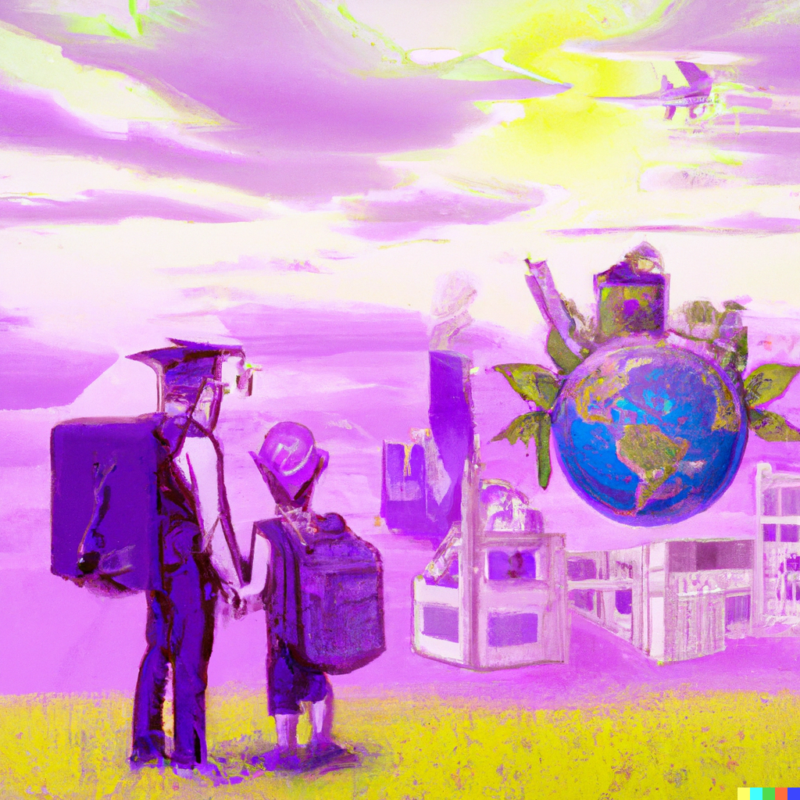Education systems worldwide are facing enormous challenges, and many individuals and organizations urge for the re-imagining of these systems. One of the ways education researchers have responded to such calls is to use speculative research methods, and more specifically by writing speculative fictions. Such work is exciting for many reasons, and has recently expanded rapidly. For a variety of reasons, a lot of this work is pessimistic and dystopian. While such work is important, and indeed a necessary antidote to the technosolutionist narratives, dystopian and pessimist stories limit us, our imaginations, and our responses. They typically focus on things to fight against, rather than things to fight/strive towards.
A DALL·E 2-generated image in response to the prompt “hopeful education future in the style of solarpunk”
In the most recent paper that my colleague Shandell Houlden and I wrote, we call for a greater number of and more diverse stories of hopeful learning futures. Recently, I read an article about the climate films that society needs, and the sentiment expressed in it fits well with our argument: We need to imagine not only “what could go wrong… but also what could go right.”
I hope this paper is valuable. There’s a lot of ideas that we’re still unraveling and grappling with, and as always we’d appreciate any feedback on it. Below is the abstract and links to the preprint (open) and published version (behind a paywall).
Abstract
In this paper we grapple with the possibility of rethinking education futures by arguing for the continued use of speculative education fiction in critical education studies, a method which has the potential for radical imagination. However, we note that as a research method such fictions need to rely less on what we identify as pessimistic visions of the future, which are visions exploring themes such as disconnection, lack of autonomy and sovereignty, and technological, corporate, state and/or authoritarian control, as these visions and themes are currently over-represented in recent publications using this method. We further demonstrate the limits of these thematic visions by tracing the relationship between the ways in which pessimistic storytelling, related as it is to apocalyptic storytelling, risks reinforcing inequality, especially with respect to settler colonial injustice. Alternatively, we propose using this method to help develop hopeful futures. These are futures shaped by themes such as connection, agency, and community and individual flourishment, and suggest a turn to the genres of hopepunk, solarpunk, and visionary fiction as models of storytelling grounded in hope which imagines more liberatory education and learning futures.
Houlden, S. & Veletsianos, G. (2022). Impossible dreaming: On speculative education fiction and hopeful learning futures. Postdigital Science and Education. https://doi.org/10.1007/s42438-022-00348-7 or preprint (pdf).
…a couple of “behind the curtains” comments:
We wouldn’t have written this paper if it wasn’t for Shandell’s expertise in narrative, which to me highlights once again the value of interdisciplinary collaborations. We wouldn’t have published it if it weren’t for journals which are open to creative work, and the editors who support it (e.g., Petar Jandrić at Postdigital Science and Education, the editors of Learning Media and Technology). The tendency of very many edtech/ID/DistanceEd/HigherEd journals to narrowly define what is and isn’t permissible restricts the futures that we can imagine and the scholarship which we can produce. Yet, peer-reviewed journals are just one way to do this work, so stay tuned: We are working on a podcast.


Leave a Reply